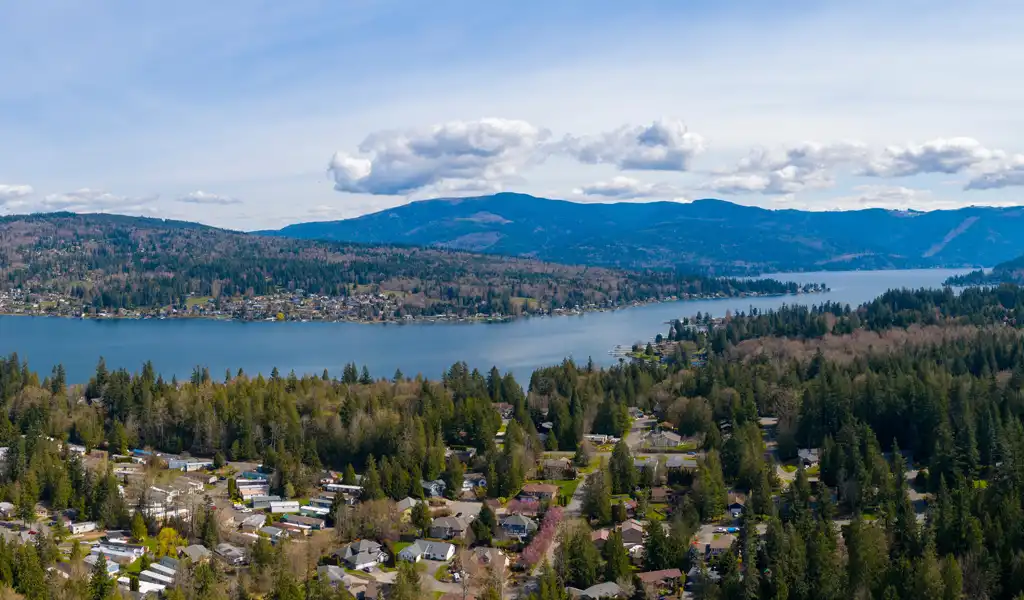Surface Water Monitoring
- What is surface water monitoring?
- Why is surface water important to monitor?
- Surface Water Monitoring Applications
- Surface Water Level Measurement
- Solinst Water Level Measurement Devices
- Monitor Water Levels Inside These Instruments
- Surface Water Sampling
- Surface Water Sampling Instruments
- Sample Surface Water Inside These Instruments

What is Surface Water?
Surface water simply refers to water on the ground surface, such as oceans, lakes, rivers, wetlands, springs, etc.

Why is surface water important to monitor?
Surface water monitoring is crucial in evaluating water bodies' overall health and quality. Hydrologists and water resources engineers worldwide focus on determining the quantity and quality of surface water as it moves across a drainage basin.
Of particular importance is studying the interaction between surface water infiltration, known as aquifer recharge, at the high points of the topography and the groundwater discharge through the baseflow of a stream at the low points of the topography. These flow path studies assist groundwater modellers in determining the water balance within the basin related to the hydrologic cycle. Understanding the water balance is crucial in maintaining sustainable water resource use, implementing proper agricultural irrigation practices, and forecasting droughts and floods. Topographic surface features indicate recharge and discharge areas, including springs, seeps, streams, ponds, and bogs. These field studies typically involve shallow-depth investigations using drive-in equipment.
One of the primary parameters measured in surface water monitoring is water levels. By continuously monitoring water levels, we can identify changes in water depth and understand the impact of factors such as precipitation, evaporation, and human water usage. This information is essential for managing water resources and ensuring the sustainability of water supply.
In addition to water levels, water temperature is another significant parameter monitored in surface water. Fluctuations in water temperature can significantly impact aquatic life and the overall ecosystem. By monitoring water temperature, we can better understand the effects of climate change, thermal pollution, and industrial discharges on water bodies.
Conductivity measurement in surface water monitoring is a vital indicator of water quality. Conductivity measures the water's ability to conduct an electrical current directly related to the water's concentration of dissolved ions. Monitoring water conductivity provides valuable insights into the presence of pollutants, salinity levels, and the overall health of the aquatic environment.
Furthermore, surface water monitoring involves the continuous monitoring of rainfall. Rainfall monitoring is essential for understanding precipitation patterns, identifying potential flood risks, and assessing the impact of weather events on water bodies. By monitoring rainfall, we can better manage water resources, implement effective flood control measures, and respond to extreme weather events.
Overall, surface water monitoring provides invaluable data for evaluating the health and quality of water bodies. By monitoring water levels, temperature, conductivity, and rainfall, we are better equipped to make informed water resource management, conservation efforts, and environmental protection decisions. Surface water monitoring programs must be conducted regularly and effectively to safeguard the integrity of our water ecosystems.

Surface Water Monitoring Applications:
- Flood and drought monitoring
- Base flow monitoring in stream beds
- Watershed, drainage basin and recharge studies
- Stream gauging
- Rainfall measurement
- Lake and reservoir monitoring
- Harbour and tidal fluctuation monitoring
- Wetland and estuary studies
- Stormwater runoff monitoring
- Construction site runoff management
- Source water protection
- Ecological studies and field research

Surface Water Level Measurement
Continuous real-time monitoring of surface water levels allows forecasters to identify flood and drought potential, enabling notifications, advisories, or management actions to be taken. Long-term data allows climate trends to be recognized and provides an understanding of the water budget.
Solinst offers surface water level instruments that measure levels manually, or by automatic datalogging. Solinst also offers telemetry options to connect remote dataloggers to a monitoring network. Telemetry allows alarms to be set when low or high levels are detected, ideal for drought and flood monitoring.
In coastal applications, such as flood and storm surge monitoring, it is essential to use instruments resistant to corrosion and biofouling and can handle more significant fluctuations in level (tidal, storms).

Solinst Water Level Measurement Devices:
- 101 Water Level Meters
- 102 Water Level Meters
- 107 Temperature Level Conductivity Meter
- 122 Interface Meter
- 3001 Levelogger 5
- 3001 Levelogger 5 Junior
- 3001 Levelogger 5 LTC
- 3250 LevelVent 5
- 301 Water Level Temperature Sensor
- 9100 Solinst Telemetry Systems
- 9200 RRL Remote Radio Link
- 9500 LevelSender 5
- 9700 SolSat 5 Satellite Telemetry

Monitor Water Levels Inside These Instruments
- 401 Waterloo Multilevel System
- 403 CMT Multilevel Systems
- 601 Standpipe Piezometers
- 615 Drive-Point Piezometers
- 615ML Multilevel Drive-Point Piezometers

Surface Water Sampling
Water quality sampling is essential for monitoring the health of aquatic ecosystems. It monitors the impacts of various pollutants in a watershed.
Solinst offers a variety sampling options that suit shallow surface water applications. Solinst also offers Drive-Point Piezometers, which make inexpensive well points ideal for shallow applications in suitable soils.

Surface Water Sampling Instruments:
- 404 Inertial Pumps
- 410 Peristaltic Pump
- 415 12V Submersible Pump
- 425 Discrete Interval Sampler
- 428 BioDegradeable Bailer
- 429 Point Source Bailer

Sample Surface Water Inside These Instruments


